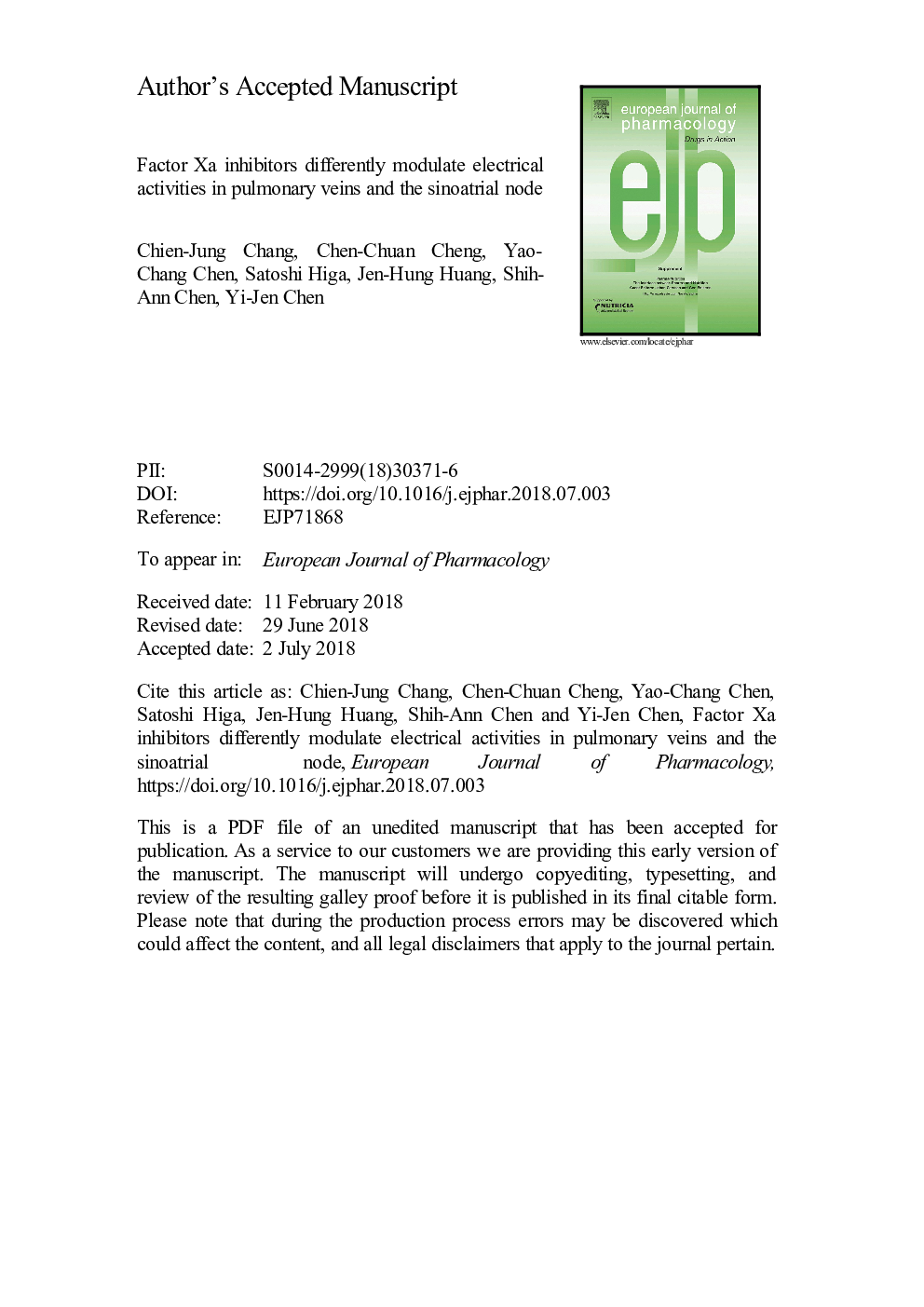| Article ID | Journal | Published Year | Pages | File Type |
|---|---|---|---|---|
| 8528975 | European Journal of Pharmacology | 2018 | 29 Pages |
Abstract
Factor Xa inhibitors reduce stroke in patients with atrial fibrillation. Pulmonary veins (PVs) and the sinoatrial node (SAN) are crucial for genesis of atrial fibrillation. However, the electrophysiological effects of factor Xa inhibitors (edoxaban and rivaroxaban) on PVs and the SAN remain unclear. Conventional microelectrodes were used to record the action potential in isolated rabbit PVs and SAN preparations before and after administration of edoxaban (0.1, 0.3, and 1â¯Î¼M) or rivaroxaban (0.01, 0.03, 0.1, and 0.3â¯Î¼M). A whole-cell patch-clamp was used to record the late sodium current (INa-late) in isolated single rabbit PV cardiomyocytes. Edoxaban significantly reduced PV spontaneous beating rates at 0.3 and 1â¯Î¼M (Nâ¯=â¯6 rabbits, Pâ¯<â¯0.05), and reduced SAN beating rates at 1â¯Î¼M (Nâ¯=â¯6, Pâ¯<â¯0.05). Similarly, rivaroxaban reduced PV spontaneous beating rates at 0.1 and 0.3â¯Î¼M (Nâ¯=â¯7, Pâ¯<â¯0.05), and reduced SAN beating rates at 0.3â¯Î¼M (Nâ¯=â¯6, Pâ¯<â¯0.05). However, neither edoxaban (1â¯Î¼M) nor rivaroxaban (0.3â¯Î¼M) reduced PV spontaneous beating rates in the presence of 1â¯Î¼M BMS200261 (an inhibitor of protease-activated receptors type 1, PAR1 inhibitor) or 10â¯Î¼M ranolazine (an inhibitor of late sodium current, INa-late inhibitor). Edoxaban (0.3 and 1â¯Î¼M) and rivaroxaban (0.1 and 0.3â¯Î¼M) respectively decreased the INa-late by 47%, 47%, 36%, and 49% (nâ¯=â¯9 PV cardiomyocytes from 5 rabbits, Pâ¯<â¯0.05). In conclusion, Factor Xa inhibitors reduce PV spontaneous activities and may modulate occurrence of atrial fibrillation by inhibiting PAR1 and reducing the INa-late in PVs.
Related Topics
Life Sciences
Neuroscience
Cellular and Molecular Neuroscience
Authors
Chien-Jung Chang, Chen-Chuan Cheng, Yao-Chang Chen, Satoshi Higa, Jen-Hung Huang, Shih-Ann Chen, Yi-Jen Chen,
